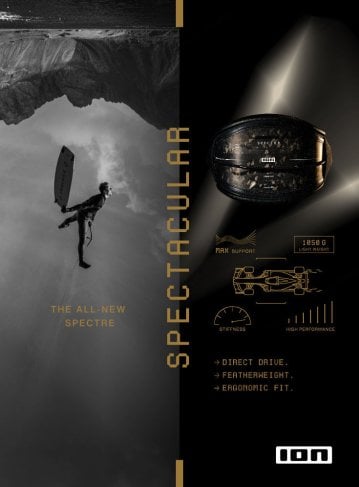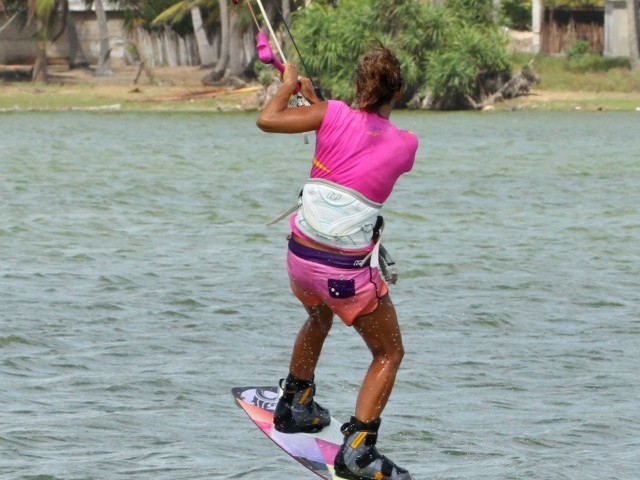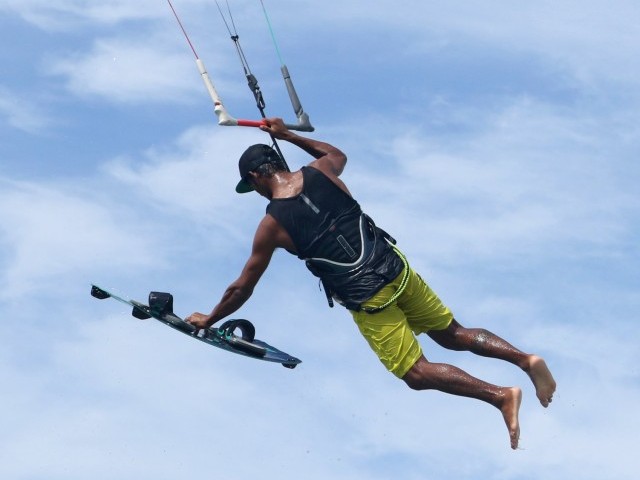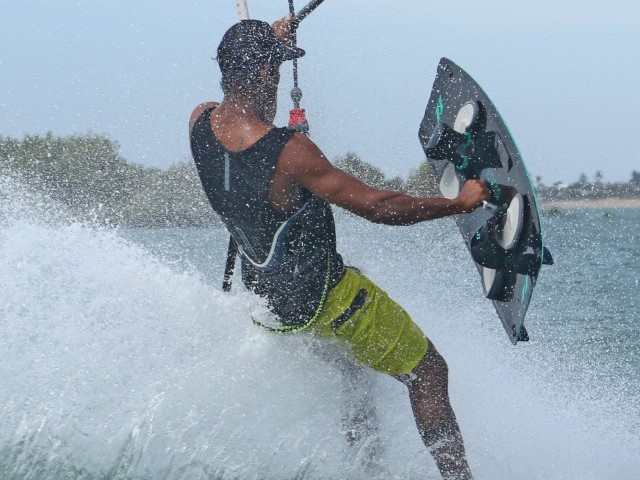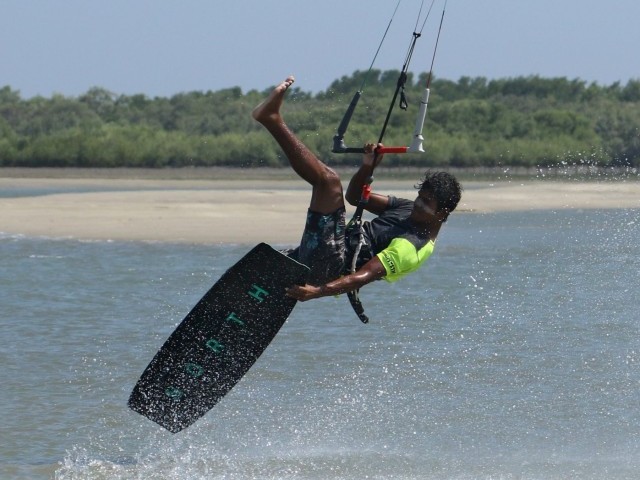
Unhooked Popped Front to Toeside
Technique / Advanced
Introduction
Finally the homework for all you unhooked and unhinged riders out there. In it’s most basic form we have the unhooked popped front to toe side. Once you have it nailed you could add a cheeky pop out to wrapped, or flick more on take off for a bone fide S-Bend to toe side, a front to wrapped, an NIS, a KL Slim, crikey you have to have this one in your box of tricks if you want to progress. We’ll assume that you have a preferred toe side, and hopefully it’s the opposite of your blind side. For us mortals learning blind tricks one way and toe side and wrapped tricks the other keeps things simple. Lets agree then to learn this on that happy toe side tack.
Set Up
If you want pop you need to approach in the right way, as it will not only help in getting you up and off the water, but also the rotation and the landing. Karine is perfectly set up for some hefty pop. With her kite parked just below 1 o’clock she pushes the nose of the board off the wind and flexes her back leg to flatten the board, increase speed and move towards the kite, allowing it to drop back a bit in the window. At the same time she has all her weight, hips, head and shoulders dropped back towards the tail of the board behind her back foot. Her hands are centred and she has her bar trimmed in enough so that she can easily unhook.
The Pop
Going into a popped front rotation it is all too tempting to drift the kite up and wait for something to happen, which will inevitably lead to a dangly and uncontrolled spin under a very high kite. It’s a must to keep the kite flying forward and get your height from a very aggressive pop. If you concentrate on going up before throwing your head around and shoulders down you will get enough height. If you dive straight into the rotation you’ll not extend up and rather fire yourself down towards the water. Here Karine is popping up hard. Having carved quickly back up onto her edge with her weight still back, she has now stamped down hard, pushing her back leg down against the edge of her board and extending her body upwards for maximum pop. She keeps her front elbow tucked in and bent to steer the forward and prevent it from drifting up, and the bar is still angled towards the kite as if she were riding. Although Karine is initiating her rotation with the kick, she concentrates on fully extending her back leg before throwing her head and shoulders down and around.
The Rotation
Once you know that you’re on the way up you need make sure that you keep rotating. You’re aiming to get your head around far enough that you’ll be able to see the water and where you want to land, and then you’ll be able to focus on the toe side bit. All the time Karine keeps her arms in and bar close, so she can keep the kite moving forwards. With the bar close she can keep the bar turning with her head and shoulders rather than leaving it behind and loosing control on straight arms. Getting around is all in the head and hands, look and your body will follow, push your hands through and your shoulders will come through quicker. If you just wait and expect to get around you’ll likely stop. You can see that Karine is leading with her head and hands – once she can see her landing she knows that it’ll end well. Interestingly you can see from here Karine could rotate fully to heelside or she can choose toe side – the point being the take off and rotation is the same.
Drop to Toe Side
So this is the different bit! If you were going for a full rotation you would push your hands around and down, bringing your shoulders around as if they were attached to the bar, whilst you look through the bar, dead downwind. This downwind focus would then force your hips to follow, in turn bringing your legs through and resulting in a heelside landing. You want to block this so the first thing to do is look forwards in the direction you are going as you push the bar around. This way your head effectively finishes it’s rotation and stalls the rest of your body. If you have something to focus on that’ll make it easier. As your body stalls it will still naturally start to fall under the bar. You can see in the photo that Karine is looking forwards, so her rotation has stopped and her feet are dropping. In short where you spot your landing is different, it needs to be in front of you, not down wind of you.
The Landing
This is why it’s going to be easier to do this on your preferred toe side. In the previous picture you could easily imagine Karine loosing her balance, catching the board and falling backwards, but she doesn’t because she’s happy toe side. With practice most of us become proficient at toe side both ways, but with speed and power it will be more natural and achievable one way at first. The result is this picture. Having stalled her rotation, Karine now looks downwind, keeps the bar in close and points the board down wind with her toe side front foot for a smooth tail first landing. If you feel off balance, pull the bar towards your bum as this will help turn you enough downwind.
Top Tips
- Getting yourself ready and prepared for the separate steps will help no end. Before attempting this practice some popped front rolls and then some pops to toe side, this will get the muscle memory going and then you can marry the two together.
- Time to check the Sequence and Videos for a real time run through.
Common Problems
If you are landing and then falling, getting pulled over your heel edge, chances are that you are not landing downwind enough. As with all pop tricks make sure that you point off downwind enough before carving back up to pop.
If you are landing downwind but are still getting pulled off balance, check your arms. You must keep your elbows in close – as soon as your arms extend your shoulders will get pulled forward and this will lead to unbalanced landing. If you feel that your arms extend during the rotation then yank the bar in towards your bottom/back hip as you drop down to land.
Keystones
- Approach as for any hard popping trick.
- Extend up before throwing down.
- Push hands and head around.
- Look in front of you to stall rotation.
- Land downwind on a flat board.
This technique article was in Issue 47 of IKSURFMAG.
Related
By Christian and Karine
Christian and Karine have been working together as a coaching team, running improver to advanced kitesurfing clinics since 2003.





